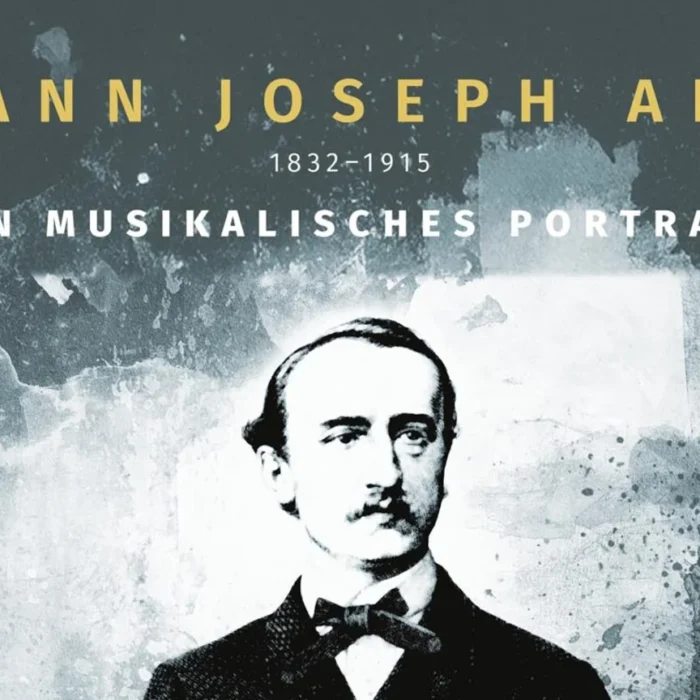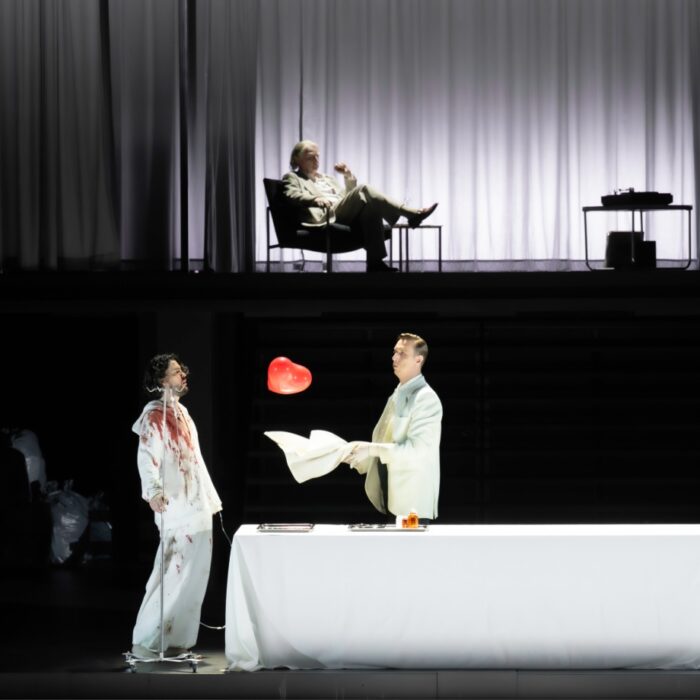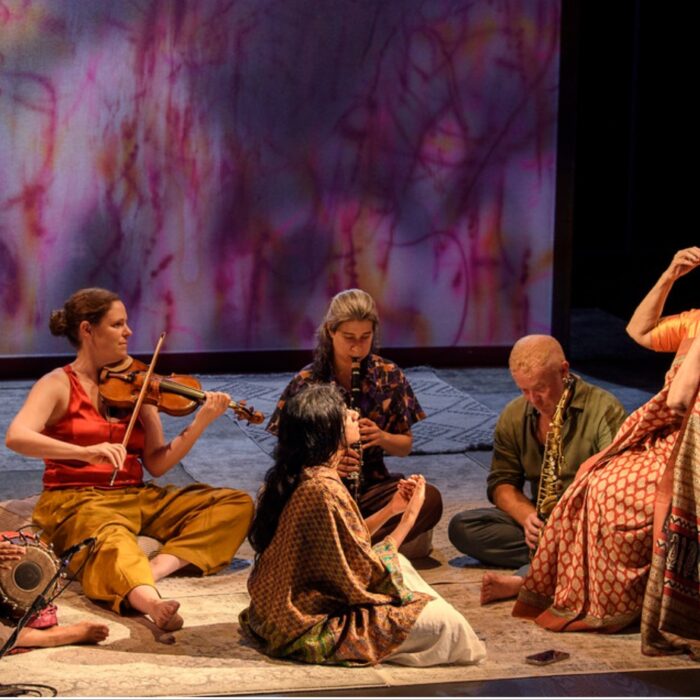
Teatro Real De Madrid 2017-18 – Gloriana: Anna Caterina Antonacci & David McVicar Team Up For Sensational Revival of Neglected Britten Work
By David SalazarBenjamin Britten’s “Gloriana” was supposed to be one of his great triumphs. The composer himself is quoted, prior to its premiere in 1953, that he saw it as his best work to that point (he had already written “Billy Budd” and “Peter Grimes,” mind you). It was composed for the regal occasion of Queen Elizabeth II’s coronation.
It was one of his greatest failures. Critics destroyed the opera less because of its quality as a music drama and more because it never met the expectations of a “celebratory” opera they were expecting for the merry occasion. Instead of a festive piece, they got a complex portrait of the iconic Elizabeth I, the monarch torn between her duty and her passion. Safe to say, the opera never got a fair shake.
The result was a work marginalized with very few revivals in subsequent decades.
But now the Teatro Real, in collaboration with the English National Opera and Vlaamse Opera are looking to lead a charge at bringing the opera back to the forefront. On the eve of the start of the first-ever World Opera Forum, the Madrid-based Teatro Real showcased the Spanish premiere of Britten’s neglected work.
And it was a sensation.
McVicar Reigns Supreme
Sir David McVicar was charged with this revival and it suits his directorial strengths to the “T.” A massive circular compass with the map of the UK dominated the stage with a slight balcony circling around the outer rim of the stage. Two massive doors look large upstage (if you’ve seen McVicar’s work on the Tudor Trilogy at the Met, you’ll recognize the look). It’s simple and spare, but utterly effective. Through this construction, McVicar places the emphasis on the fate of England as the opera’s chief conflict, pitting Elizabeth and Robert Devereux, the Earl of Essex on opposing ends. Essex, or Robin as the Monarch calls him, is passionate, impulsive, and utterly impatient while Elisabeth is portrayed as more calculated and reserved, even dangerous. At the center of the circle, a platform rises to provide a metaphorical “throne.” We see Elizabeth sit there every time she is on stage and we see Essex jump on top of it after being named Lord Deputy in Ireland. The compass goes out of wack and starts turning uncontrollably when Essex is ultimately condemned, emphasizing directionless and Elizabeth’s ultimate indecision at the moment of executing her favorite.
One interesting choice made by Britten and librettist William Polmer make in this opera is to include a scene where the audience experiences the events unfolding from the experience of the townspeople. It is a clear callback to the structure utilized in “Boris Godunov,” and enriches the overall texture of the opera. Instead of keeping the townsfolk marginalized to the balconies onstage, a long table is brought on to put the common folk right in the same arena as the nobles and monarch.
The addition of a red spirit that looked like a Lion, added to the sense of dread and darkness of the work. The character arrived in an interlude in the second act, running at a wide range of characters in menacing fashion. They played around with him, making him seemingly harmless, until the end of that same act. At that point, the character comes in with a sword that Essex will lead into battle. Suddenly, this guardian of the blade didn’t look so fun anymore. And in his final appearance in Act three, the character menaced the townsfolk as they attempted to get a grip on the events unfolding around them.
Another great touch from a staging perspective came at the climax of Act two. With everyone celebrating in dance, the stage lighting downstage suddenly placed a low-angle spotlight on two looming figures in the shadows – Sir Robert Cecil and Sir Walter Raleigh, the two men that would ultimately crash this party in the next act. This matched perfectly with Britten’s own theatrical coup, shifting from light dance fair to gradual intrusions from the bass. It was a beautiful marriage of theater and music if there ever was one.
Costuming is elegant, though never overindulgent (again, some of Elizabeth’s dresses almost feel like they were pulled straight from one of the Met productions of “Maria Stuarda” or “Roberto Devereux”) and the choreography on the wide-range of dances is sumptuous. By combining a minimalist set with a traditional approach to the drama, McVicar has succeeded in creating a dynamic production that provides great insight on the weighty subject matter.
Now on to the artists that brought it to life as theirs was the greatest challenge.
Queen of the Night
Anna Caterina Antonacci is one of the finest artists of her generation, even if she isn’t getting calls from some of the major opera houses in the world. Her voice didn’t pack much of a punch from a volume standpoint, but what she did with it surely did. This was no explosive queen who imposed her will through vocal power; in fact, she was much more restrained and as the night unfolded, her voice grew more frail, dark, and gentle to emphasize Elizabeth’s gradual demise. Early on in the work, she danced about with ease and grace and in the scene in which she embarrassed Devereux’s wife Frances, she had a sardonic snarl in her singing, the text pointed and subtly vicious. But she also displayed qualities of genuine beauty. In her first scene with Devereux, her voice was at its most tender, especially when they joined in together at the end of his Lute song. When we hear that very theme reprised in their final scene together, “Happy were we,” there was a devastated quality to her singing. She retained distance from him throughout the scene, emphasizing the character’s own sense of disappointment toward her beloved.
But nothing could prepare one for the final scene in which Elizabeth contemplates what is to come for her at the end of all of this. In a brilliant stroke, Britten’s vocal line becomes more spoken than sung and here Antonacci beautifully explored the text through crisp pronunciation, still giving it ebbs and flows of phrasing; she was still singing the text. The voice faded with each phrase, one sensing the Queen’s sense of strength and life fading with it.
Unbridled Passion
In the role of Essex, tenor Leonardo Capalbo made a major case for himself as a tenor on the rise. He’s no newbie in Europe, as his resumé shows. But still young, the Italian American tenor is very much a star in the making. Despite his diction being oddly unclear (words ending with consonants tended to be unclear, except when they ended with the consonant “t”), but his voice displayed a strong sense of security and clarity. If his tops tended to lose some of the brightness of his middle range, they didn’t lose impact, especially with his approach to the character. In contrast to Antonacci’s more reserved approach, Capalbo’s Essex was all fire and passion. His anger and jealousy in the first scenes was palpable from the get-go and his frustration when talking to his wife about Elizabeth’s hesitations toward him added to his characterization of a reactionary being. He might have come off as a bit childish in this latter scene, but it also added to the overall complexity of the work’s interpretation – Essex was no true hero in the idealized sense but a man driven by pride and a need to satiate his ego. His interpretation of the Lute Song added to this as he tossed off Britten’s fioritura writing with élan, the voice floating effortlessly and the multitude of notes gliding. He was a man in utmost control for this one moment, adding massive contrast to other scenes where he had anything but a sense of control. His final scene with Elizabeth was the most riveting of the entire night, his previous explosiveness now turned to passionate begging at her hands.
Contrasting Figures
Duncan Rock’s Charles Blount was a suitable contrast to Capalbo’s Essex, his voice measured and rock solid (pun intended). He had an elegance that Capalbo didn’t, but it certainly added depth to the world of the Queen’s court. The same could be said for the contrasting figures of Frances and Penelope, performed by Paula Murrihy and Sophie Bevan respectively. Murrihy tended to be more in line with Capalbo’s impassioned Essex, while Bevan’s Penelope, even in her most desperate moments, had a sense of composure in her characterization that matched Rock’s Blount. In fact, Bevan and Rock provided the most perfect melding of voices the entire night in their brief duet at the top of the second act.
Leigh Melrose and David Soar both provided hardened edges to Elizabeth’s two right-hand men while James Creswell’s bass provided an earthiness to the abstract narrative. The repetitions of the same melody had a soothing quality in his interpretation, though they undeniably gained in distress as they returned.
Elegance From the Maestro
In the pit, conductor Ivor Bolton drew out some glorious sounds from the Orquesta del Teatro Real. The opening of the opera, with its emphasis on brass instruments, was clean and crisp and throughout the evening there was a sense of musical refinement. There were a few moments near the end of the opera where conductor and chorus seemed a bit off the mark, but all in all, Bolton sculpted an elegant construction of Britten’s score. I can’t move along without mentioning the climax of the second Act where Britten’s music transitions from a jolly dance to imposing basses hinting at the tragedy set to explode. Bolton’s handling of this transition was, in a word, spine-tingling.
So yes, the Teatro Real has a major success on its hands and if this production continues to succeed in the other two houses where it is set to debut, then hopefully, this opera, a true gem, can find a rightful place in the operatic repertoire. Because that is where “Gloriana” belongs.


